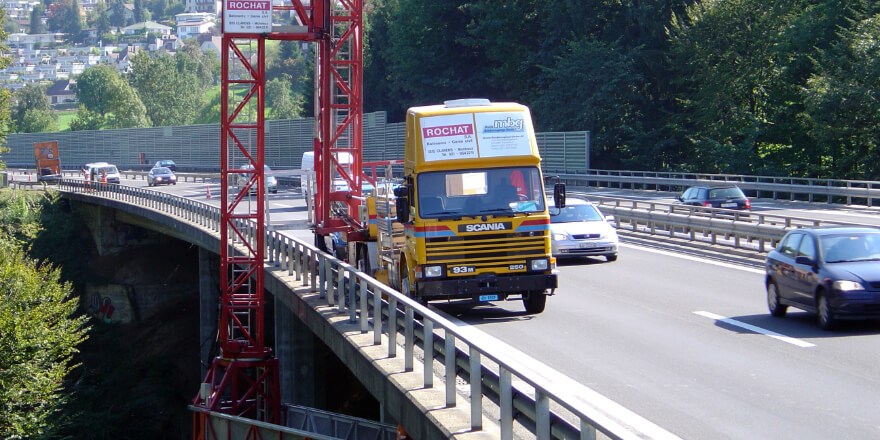
Concrete Movement Joints
Enquire Today For A Free No Obligation Quote
At Concrete Movement Joints, we specialise in providing high-quality solutions for accommodating the natural movement of concrete structures.
These critical features prevent cracking and other damage caused by thermal expansion, contraction, and other stresses.
Whether you’re constructing industrial floors, pavements, or bridges, our expertise ensures your concrete structures remain durable and safe. Our services are designed to optimise performance while adhering to the highest industry standards.
Contact us to get exceptional concrete movement joints services.
Why Are Movement Joints Important in Concrete Structures?
Concrete movement joints absorb stresses caused by temperature changes, drying shrinkage, and mechanical loads, preventing cracks, buckling, or deformation. They are crucial for maintaining the stability and longevity of concrete structures.
Without these joints, the structure could experience significant damage, leading to costly repairs or potential safety hazards. By mitigating internal stresses, movement joints enhance the structural performance and extend the lifespan of concrete.
What Types of Concrete Movement Joints Are There?
The main types of concrete movement joints include expansion joints for managing expansion and contraction, contraction joints for controlling drying shrinkage cracks, isolation joints for separating structural elements, and construction joints for dividing large concrete pours.
These specific concrete movement joint types have the following characteristics:
- Expansion joints: Allow concrete to expand and contract without cracking, accommodating thermal and environmental changes.
- Contraction joints: Control where cracks form during drying shrinkage, ensuring predictable and manageable fractures.
- Isolation joints: Separate structural elements to allow independent movement, preventing stress transfer between connected sections.
- Construction joints: Divide large concrete pours into manageable sections, ensuring proper handling and curing.
How Do Movement Joints Work in Concrete?
Concrete movement joints function by providing a controlled space or incorporating flexible materials that absorb stress.
As concrete expands, contracts, or shifts due to environmental factors or loads, these joints allow the material to move without cracking or causing structural issues.
Flexible fillers and sealants within the joints ensure they remain watertight and effective, preserving the structural integrity of the concrete.
What Materials Are Used for Concrete Movement Joints?
Concrete movement joints are made by using rubber, neoprene, flexible sealants, metal strips, and pre-formed fillers.
Rubber and neoprene are valued for their elasticity and resistance to wear, while flexible sealants create watertight seals. Metal strips add strength in high-load areas, and pre-formed fillers ensure consistency and performance under varying conditions.
These materials are chosen based on the specific requirements of the project.
Where Are Concrete Movement Joints Typically Placed?
Concrete movement joints are strategically installed in slabs, walls, pavements, bridges, industrial floors, and other areas prone to stress and movement.
In slabs and floors, joints prevent cracks and misalignment. Walls benefit from lateral stress management, while pavements and bridges use joints to accommodate thermal expansion and heavy loads.
Their placement ensures stability and protection across diverse applications.
How Much Do Concrete Movement Joints Cost?
Concrete movement joints typically cost between £5 and £50 per metre, with installation labour ranging from £50 to £100 per hour and annual maintenance averaging £200–£500. This cost depends on the type, material, and installation complexity.
Rubber and sealant joints range from £5 to £20 per metre, while metal strips may cost £30–£50 per metre. Labour costs for installation typically fall between £50 and £100 per hour. Maintenance, including inspections and minor repairs, averages £200–£500 annually.
Contact us to get detailed quotes from us to help you manage concrete movement joints project budgets effectively.
What Is the Process for Installing Concrete Movement Joints?
The installation of concrete movement joints begins with carefully determining placement of joints based on stress-prone areas.
Next, the site is prepared by cleaning and levelling surfaces. Joint materials such as rubber or sealants are then inserted, followed by sealing to create watertight protection. Professional installation ensures the joints function optimally under varying conditions.
How Do You Maintain Concrete Movement Joints?
Maintaining concrete movement joints involves regular inspections, cleaning, and resealing.
Inspections help identify wear, cracks, or separation in joint materials. Cleaning removes debris that could compromise joint functionality. Resealing ensures the joints remain watertight and flexible, preventing water infiltration and maintaining performance.
Proper maintenance extends the lifespan of the joints and reduces the risk of structural issues.
Contact us to get a comprehensive concrete movement joints maintenance plan.
What Are the Signs of Failing Concrete Movement Joints?
Signs of failing concrete movement joints include visible cracks near the joints, separation of materials, water infiltration, and wear or damage to the joint itself.
These issues indicate that the joint is no longer effectively absorbing stress or protecting the structure. Prompt repair or replacement of damaged concrete movement joints is essential to prevent further deterioration and ensure the safety and integrity of the structure.
How Do Movement Joints Improve Concrete Durability?
Concrete movement joints significantly enhance the durability of concrete structures by reducing internal stresses.
By accommodating natural movements such as expansion, contraction, and shifting, they prevent uncontrolled cracking and structural damage.
This not only extends the lifespan of the concrete but also minimises the need for frequent repairs, resulting in long-term cost savings.
Find More Info
Make sure you contact us today for a number of great Concrete Movement Joints services.
For more information on Concrete Movement Joints, fill in the contact form below to receive a free quote today.
★★★★★
Concrete Movement Joints did an amazing job on our project! Their team was highly skilled, professional, and completed the work efficiently. The quality of their joint installations is top-notch, and it has significantly improved the durability of our concrete surfaces. I would highly recommend Concrete Movement Joints to anyone needing reliable solutions!
Laura Mitchell
Greater London
★★★★★
We’re extremely happy with the service provided by Concrete Movement Joints. The team explained the process thoroughly and delivered excellent results. Their expertise and attention to detail ensured the joints were installed perfectly, preventing future cracking and damage. Great company and outstanding work!
James Carter
Greater London